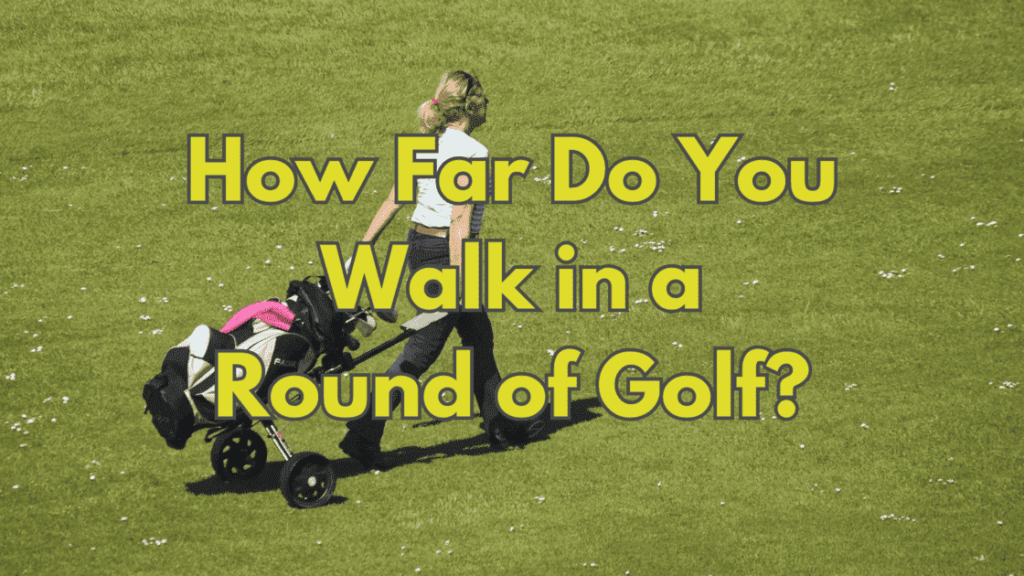Many of us have suffered inconsistent play on the golf course. This has led a lot of us to learn more about how to shape shots in difficult situations. Even if you try hard, sometimes your shot will go in a completely different direction than you planned. So, your ball goes off its goal line. This is called a “double cross” in golf.
The main goal of this talk is to explain what a double cross is in golf and suggest ways to avoid them. If you’re having trouble with other parts of your golf swing, we also have a number of in-depth tips to help you with those problems.
What is a Double Cross in Golf?
A double cross in golf is when the ball goes in the opposite direction of where you wanted it to go. Imagine that a tree is in the way of your path to the green, so you have no choice but to try a fade shot. As a right-handed golfer, you aim to the left of your goal because you expect the ball to go from left to right. But you are surprised when the ball instead goes in a draw direction, away from where you wanted it to go.
In essence, you were trying to hit the ball to the right, but the shot hooks, sending the ball far past the left side of the field.
I, too, had a double cross happen to me during a round not long ago. My tee shot on a par 5 hole went behind a bush, so I had to decide whether to try to hit the ball over the bush with a lofted club or to use a fairway wood fade. So, I went with the second choice.
In my approach, I put my feet to the left of the target, lined up the open face of the club behind the ball, and started my backswing. But as I got closer to contact, my rotation slowed down, which let my hands take control and close the clubface. Because of this unfortunate chain of events, the snap hook went about 20 yards in the wrong way.
For golfers with higher handicaps, it’s normal to set up for a left-to-right ball flight but accidentally hit a right-to-left “snap hook.” Since they aim to the left at first, hoping for a slice or fade, the result is even worse than if they had just shot straight at the goal.
Common Causes Of A Double Cross
Slow Rotation
As my own experience with the double cross shows, one of the main things that makes it happen is a slower hip rotation. This makes the hands move faster than your body, causing the clubface to close before it should. So, the ball hooks out of control to the left side of the course, putting the golfer behind for the rest of the hole.
Power and accuracy depend on how well your hips rotate during contact. To learn more about how much your hips should turn during your golf swing, We found an excellent youtube video that demonstrates the best training for a perfect swing.
Where’s Your Weight?
People who regularly slice their shots have a hard time keeping their balance at impact, which makes them lean back. This problem happens when they don’t move their weight forward, which makes their body and face open at impact.
On the other hand, golf shots that draw too much can be caused by transferring weight too early during the downswing. This causes the body and clubface to close, which results in a hook.
Ball Position
Where you put the golf ball in your position has a big effect on where it goes when you hit it. Mark Blackburn from Titleist says that if you want to get a draw, you should move the ball a little farther back. This position helps close the clubface angle at contact, which starts a curve from right to left.
When trying to do a fade, on the other hand, Blackburn says to put the ball in the front and middle of your stance. When the ball is not in the right place in the stance, it is hard to get the right clubface angle at impact, which often leads to a slice when a draw was meant.
Swing Path
Apart from hip movement and where the ball is placed, swing path deviations can also cause the golf ball to go in the wrong direction. For example, if you swing from the inside out, you are more likely to hit a draw. If you swing from the outside in, you are more likely to hit a fade or slice.
In short, if you aim to the right of the target and swing from the outside in, the ball may slice or slide away from the target. In the same way, looking left for a fade but making an inside-out swing can lead to a hook.
Clubface At Impact
Even though the physics of the swing, the way the club rotates, and where the ball is when it hits the clubface all affect how the shot turns out, the orientation of the clubface at impact is the most important factor. The ball will slice or fade if the clubface is open when it makes contact with the ball.
On the other hand, a closed clubface at contact causes more right-to-left sidespin, which makes a draw or hook more likely.
Swing Too Fast
Most of the time, bad things happen when you try to hit the ball too fast. When I tried to swing faster, and immediately ran into double crosses. My advice to the normal player is to swing more smoothly and with more control, and to resist the urge to hit the ball too hard.
4 Tips to Fix a Double Cross
1. Rotation Is Key
The first step in getting rid of the double cross in your golf swing is to pay attention to hip movement. It’s important to keep your hips from turning too much before contact, because that lets your hands lead the clubhead, which often leads to a closed clubface and a hook.
Tyr this simple yet effective drill for better rotation.
Think of a golf ball as a stone that you could skip across a calm lake. Turn your body and then let go of the ball. Notice how this action improves both your power and your accuracy.
After you’ve practiced this move three to five times, add it to three of your practice hits. Focus on turning your hips easily through impact to move the clubface in the direction you want it to go. This will make it more likely that you can hit the shot shape you want with more power.
2. Correct Your Weight Position
To get a fade, try putting more weight on your back foot during address. Lift your front foot as you hit the ball and keep your weight on your back leg. This pose makes it easier to keep your body open during impact, which helps you fade.
Practice a few half swings to see how this position lets you keep the clubface open at impact, which causes the ball to fade.
To prepare for a draw, on the other hand, shift your weight to your lead leg by lifting your back foot.
In short, these drills help improve muscle memory, which makes it easier to make fade and draw shots consistently while reducing the risk of a double cross.
3. Improve Your Swing Path
Changes in the swing path make it hard to get the clubface in the right position at contact. If you want to hit a draw, swing in and out to give yourself the best chance of closing the clubface at contact.
When a right-handed player hits the ball with an open clubface, the ball spins from left to right. This is called a fade or slice. Start by making your stride wider and putting the ball in the middle of your front foot. On your backswing, move the club away from your body. On your downswing, move the club toward your body.
This way of swinging causes the clubface to cut across the ball, which creates sidespin with an open face and, in the end, a fade.
4. Change the angle of the clubface at impact
The ball’s path is mostly determined by the slope of the clubface when it hits the ball. By making the above changes to your swing, you will see better touch with the ball and better alignment of the clubface at impact.
A helpful drill is to break the backswing into three separate parts and make sure the club stays on the line you want it to stay on throughout. Stop for a moment at the top of the backswing before beginning the downswing.
During this drill, if your clubface isn’t on the right line, you can fix it by taking small steps. Do a half swing, stop, and focus on swinging inside for a fade and outside for a draw. When playing golf, knowing where the club is at this point helps you be more consistent and reduces the number of double cross shots.
Final Thoughts
The frustrating phenomenon known as the “double cross” can wreak havoc on your scorecard and your confidence. As we’ve explored in this article, it happens when your carefully planned shot takes an unexpected detour in the opposite direction, leaving you scratching your head on the fairway.
But fear not, fellow golfers, for there is hope! Armed with the knowledge of the common culprits behind the double cross, you can now step up to the tee with renewed confidence. Remember the importance of hip rotation, weight distribution, swing path, and clubface orientation at impact. These factors are your allies in the battle against the dreaded double cross.
So, the next time you find yourself facing an obstacle on the course or needing that perfect shot to save par, keep these tips in mind. With practice and perseverance, you’ll have that double cross under control, and your golf game will be on the right path. Happy swinging!






